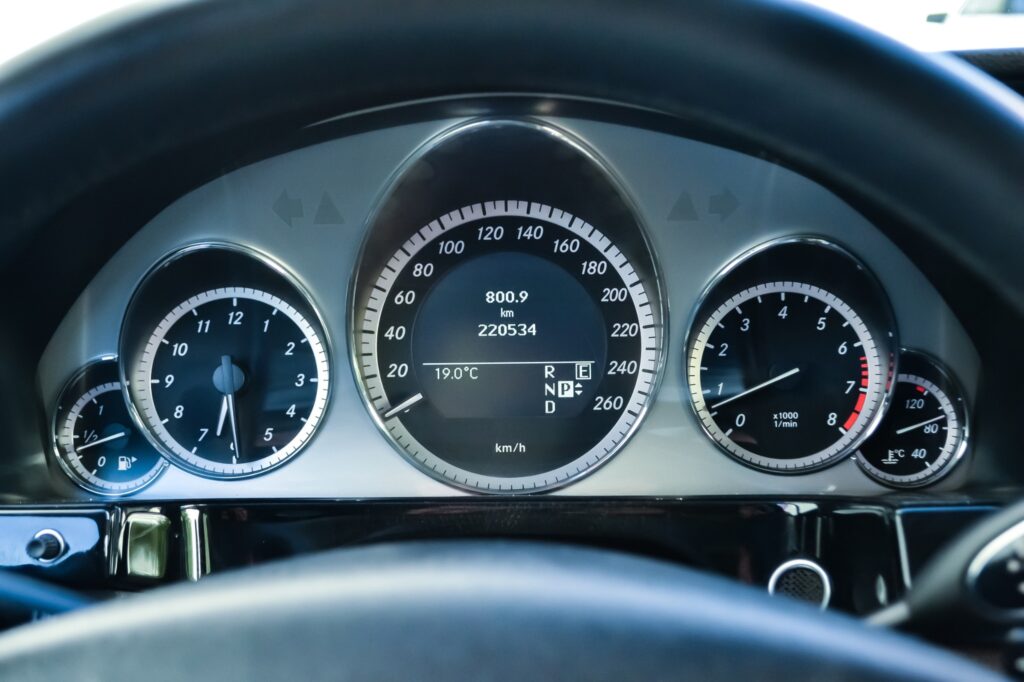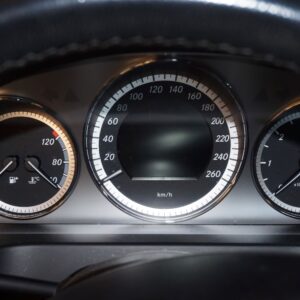The instrument cluster is a crucial component of any vehicle, housing a collection of gauges and displays that provide drivers with useful information. It helps drivers see how fast the vehicle is traveling, how much fuel is left, and of course, how many miles the vehicle has traveled in total.
But if you replace the instrument cluster, will the mileage change?
Will My Mileage Change If I Change My Instrument Cluster?

It depends on the vehicle. Older vehicles with drum-type odometers would have a red tenths digit on a replacement cluster and a sticker with the vehicles’ original mileage that was supposed to be attached to the driver’s door pillar by the VIN label.
On modern vehicles with electronic odometers, a few clusters will reflect the mileage stored in the PCM/ECM (most others won’t), and this can vary for several reasons even among the same model with different trim packages.
But even on vehicles that store the mileage in the instrument cluster, the BCM or the PCM/ECM will have the vehicle mileage stored in its memory.
When the instrument cluster is replaced by a dealer, the replacement cluster will be ordered with the correct mileage for the vehicle programmed into the cluster at the dealer’s parts warehouse, or the mileage will be retrieved from the BCM or PCM/ECM and flashed into the replacement cluster at the dealer using specialized programming tools.
How Does A Vehicle Track Mileage?
The odometer measures the distance traveled by a vehicle through data collected by a sensor that detects and counts wheel rotation. This data is converted to the distance traveled by multiplying the number of rotations by the circumference of the tire, allowing the odometer to estimate the vehicle’s total mileage.
The data gathered by the odometer is stored in the vehicle’s ECU or BCM and in most cases is also stored in the odometer itself.
What is the Importance of Mileage?
The total distance a vehicle has traveled can be used as a clear indicator of its general wear and tear. But some newer vehicles, particularly pickups and SUVs, may store idle time as well as mileage.
When people see a vehicle with high mileage, they’re more likely to assume it’ll need more frequent repairs and maintenance. On the other hand, vehicles with less mileage are less likely to need major repairs any time soon.
Take note, however, that some high mileage cars that have been driven a lot on long trips rather than around town will actually have less wear and fewer potential problems than a vehicle that has few miles and has been used to make a lot of short trips.
Is it Possible to Change the Mileage of a Vehicle?
It is technically possible to change the mileage of a vehicle, though it’s not recommended to do so. The process of changing the mileage is known as odometer rollback, and it’s a crime in all 50 states.
It’s illegal for a shop to release a vehicle with fewer miles on the odometer than it had when the vehicle entered the shop. It’s also illegal for a person to change the mileage on their own vehicle.
Having the wheels go in reverse with the vehicle jacked up will only add miles to vehicles with electronic speed sensors because the speed sensor doesn’t know which way the vehicle is going and the signal is the same either way.
The federal Truth in Mileage Act (TIMA) of 1986 requires all vehicle sellers to disclose the mileage of the vehicle on the title. It’s estimated that over 450,000 vehicles are sold with false odometer readings every year, costing buyers more than $1 billion annually.
As for how odometer rollbacks are performed, it depends on the vehicle. With older cars, one could manually roll back the number displayed on a mechanical odometer. Modern vehicles use digital odometers, and tampering with the numbers requires specialized rollback equipment that hooks into the vehicle’s electrical circuit.
What Should You Do if A Mechanic Accidentally Resets the Mileage?
If a mechanic at a dealership accidentally resets or rolls back the mileage of your vehicle during maintenance, you must ask them to revert the change right away. Most modern vehicles have electronic logs that can provide historical mileage data, allowing mechanics to change the mileage back to the original value before the procedure.
Because it’s illegal to drive a vehicle with a tampered odometer, have the issue rectified as soon as possible. If the mechanic cannot revert the change, make sure to document the incident — specifically the date, time, and any recorded conversations you’ve had with the mechanic. Service records and records that indicate your vehicle’s mileage will also come in handy.
If a mechanic is unable to revert your mileage to its original number, it might be a good idea to notify local authorities or an attorney who has experience in dealing with cases of odometer fraud.
Any information provided on this Website is for informational purposes only and is not intended to replace consultation with a professional mechanic. The accuracy and timeliness of the information may change from the time of publication.
































